It was summer 2019 when I was at Brace Lake Outfitters for my second time, and having another amazing trip. I was in the main lodge chatting with owner Kyle Poleski when he said he had something he wanted to show me. It was the location of an outpost camp he had just acquired on Little Makokibatan Lake, which is a widening of the Albany River. He was planning on some renovation work, and would then be opening it the following year. After a quick text with my brother, I booked us in for opening weekend. Well that trip was postponed because of the pandemic, but in Spring 2022, four of us headed out for what we expected would be a great experience, but turned out to be the best Walleye fishing ever.

Our journey started in Kitchener / Waterloo, Ontario, travelling a full day to arrive in the town of Longlac. We had booked a motel there, knowing we’d still have another 1.5 hours to drive the following morning to get to our float plane in Nakina, which is north of Geraldton. The long drive and early mornings are never a challenge when combined with the excitement of an epic trip. We’d all lost the previous season of fly in trips, so our anticipation was extra high. We were greeted at the float plane base by blue skies, low winds, and friendly staff. I’m always amazed by the efficiency with which we are loaded on the plane and up in the air.

We had a stop to make on our flight up, popping into Brake Lake Outfitters to pick up Kyle, who would be making sure all was set up and ready for his first guests of the season. The camp had already been opened up, but it was great that Kyle took the time to show us around himself. Our total time in the air was about 45 minutes, flying over some amazing boreal forest and often untouched wilderness. Arriving at the outpost presented a first for me, in that rather than floating up to a dock, we actually beached the plane. I was again impressed with how a pilot is able to maneuver a plane on water, and back it onto a beach!

As quickly as we’d loaded the plane, we unloaded our gear and got everything into the cabin. The cabin has an addition that was put on the previous year, to increase the sleeping quarters. There are bunks for six, a shower room, and an open area that serves as the main area for the kitchen / living area. The cabin has running hot and cold water provided from a water tower, a full size freezer, fridge / stove, wood stove and all the cutlery / utensils you will need. There is a BBQ on the small deck, a generator to provide electricity, and an outdoor privy. The cabin is located in a area that can be a bit wet at times, so there is wood planking from the cabin to the beach. After a couple of days this cabin felt just like home. Below you’ll find a full video walk-through of the cabin so you see exactly what you’ll experience when you book your trip.
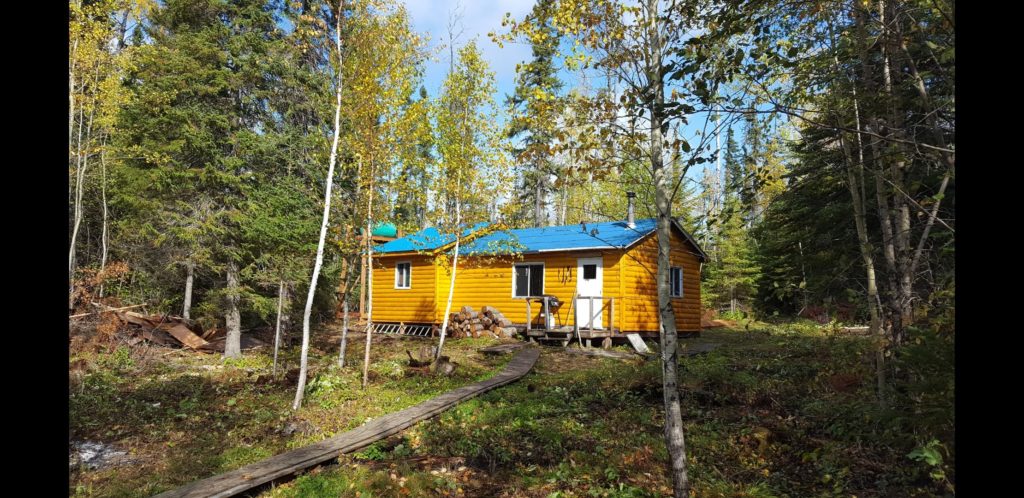
After getting us settled in, and oriented to how everything works at the camp (water pump / generator etc), Kyle and the pilot headed out, and left us to get ourselves squared away and on the water. One thing we had to be very aware of was the wind. While we were located on “little” Makokibatan, the main lake is a vast body of water, and when the wind comes up, can be very treacherous. For the first couple of days we stayed on the smaller section of water, which is still far larger than many of the remote lakes and provided ample fishing opportunities.
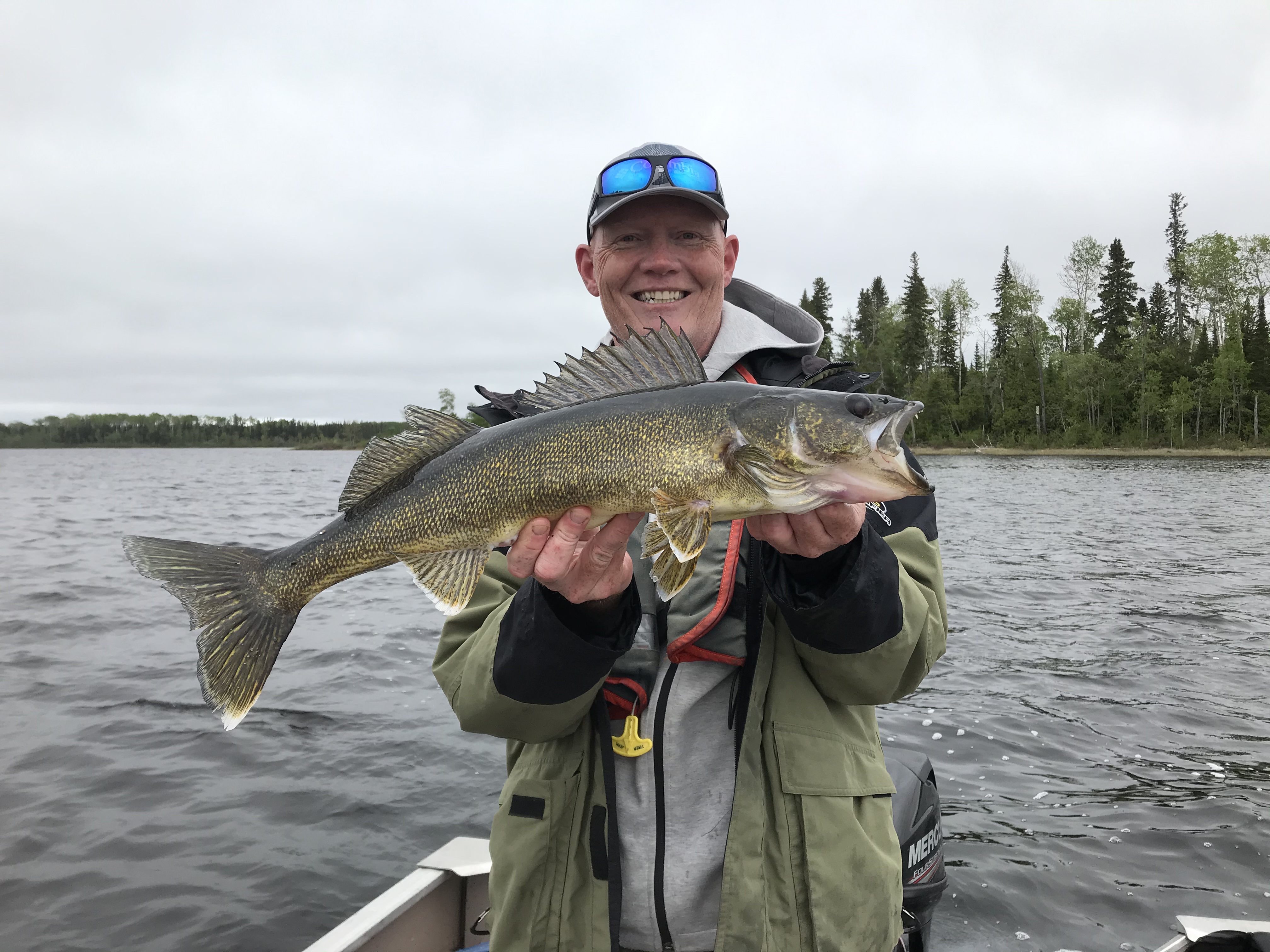
Our trip was in the spring, not too long after ice out, so our plan was to fish shallow areas, where we could find emerging or last year weed growth, rock areas, as well as current. As we were on the Albany River, there was the main river in, two main outflows, as well as several other smaller rivers coming in. One of the first locations we fished is called “The Cut”, and is a very narrow connection between “Little” and “Big” Makokibatan. There was great water flow from both river movement, but also the wind created great action.
“The Cut” is about as automatic a fishing spot as you will ever find, and it was when we really came to understand what people mean when they say “larger than average size fish”. I would not be exaggerating to say that we would get on runs of catching a fish on every cast, and a slow time would be having to cast 3 times before getting a hit.
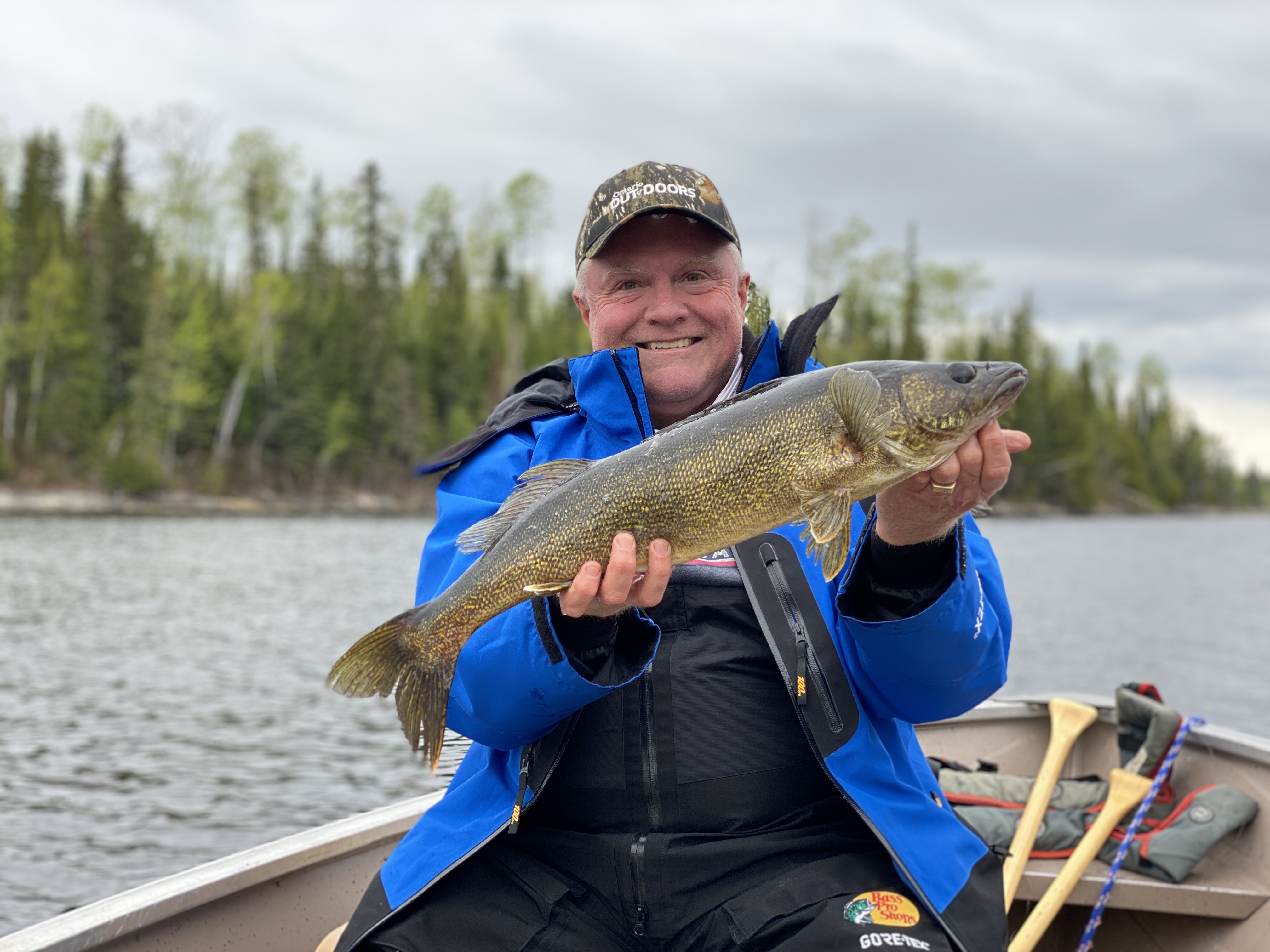
The average size was simply outstanding. Our average fish was about 20-22 inches, and we didn’t bother to photograph anything that wasn’t at least 24 inches. Many lodges I’ve been to consider a 24 inch Walleye a trophy catch, and you often get entered into a draw. If that was the case here, we’d each have had 15-20 entries (yes, each). It’s a testament to how many big fish there are, that we were using barbless jigs, and hand landing almost all the fish. We never worried too much if a big one got off, or flipped off before we could land it, because there were just so many.
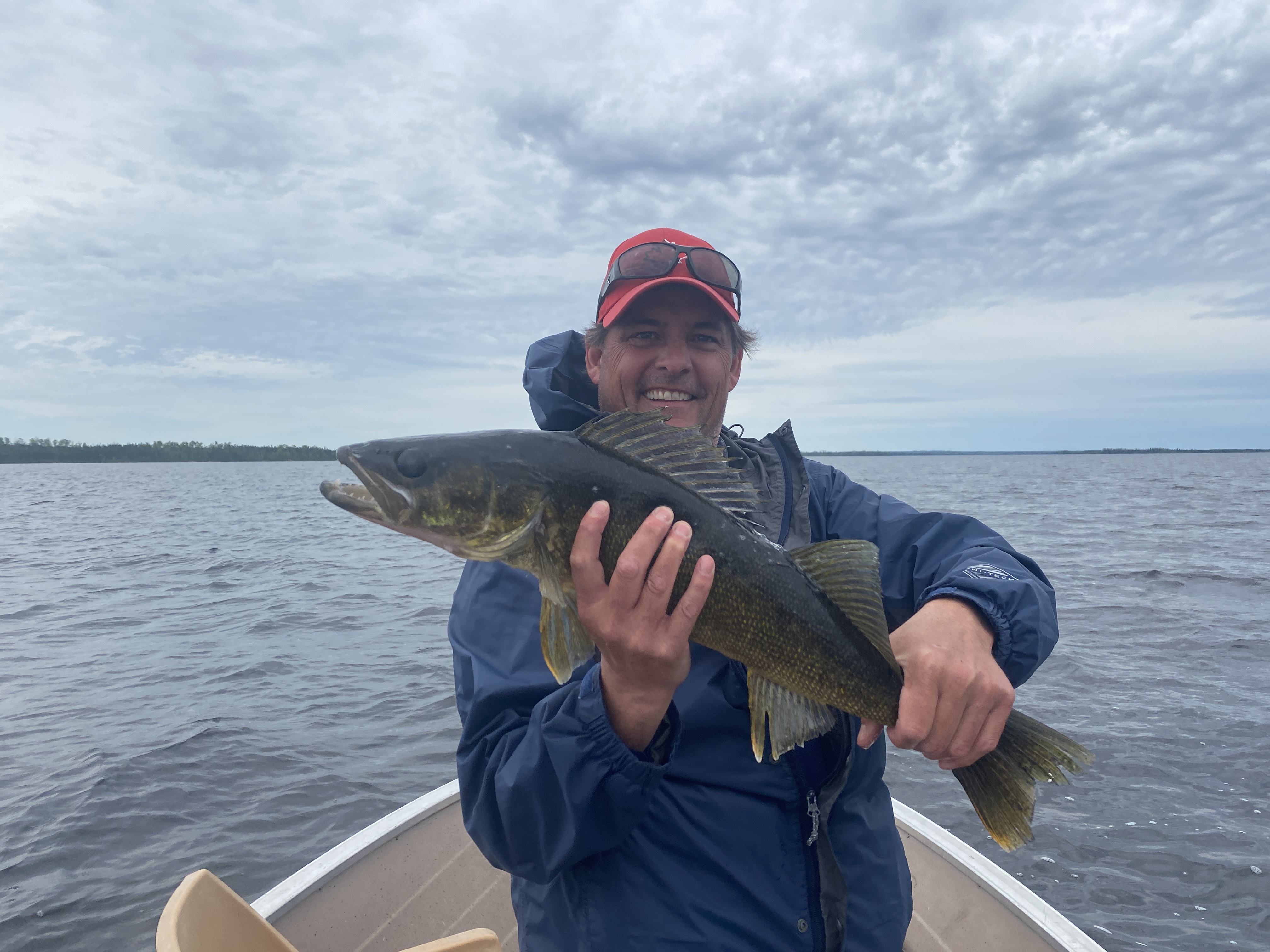
For those of you who like numbers, look no further. For the fun of it, Chris and I started keeping track of our numbers one day later in the afternoon. We were back on the water at about 4:00pm after a late lunch, and were off the water around 9:30 that evening. We boated over 100 Walleye during that time, which does’t factor in the number of fish we’d caught earlier in the day. There were just so many fish.
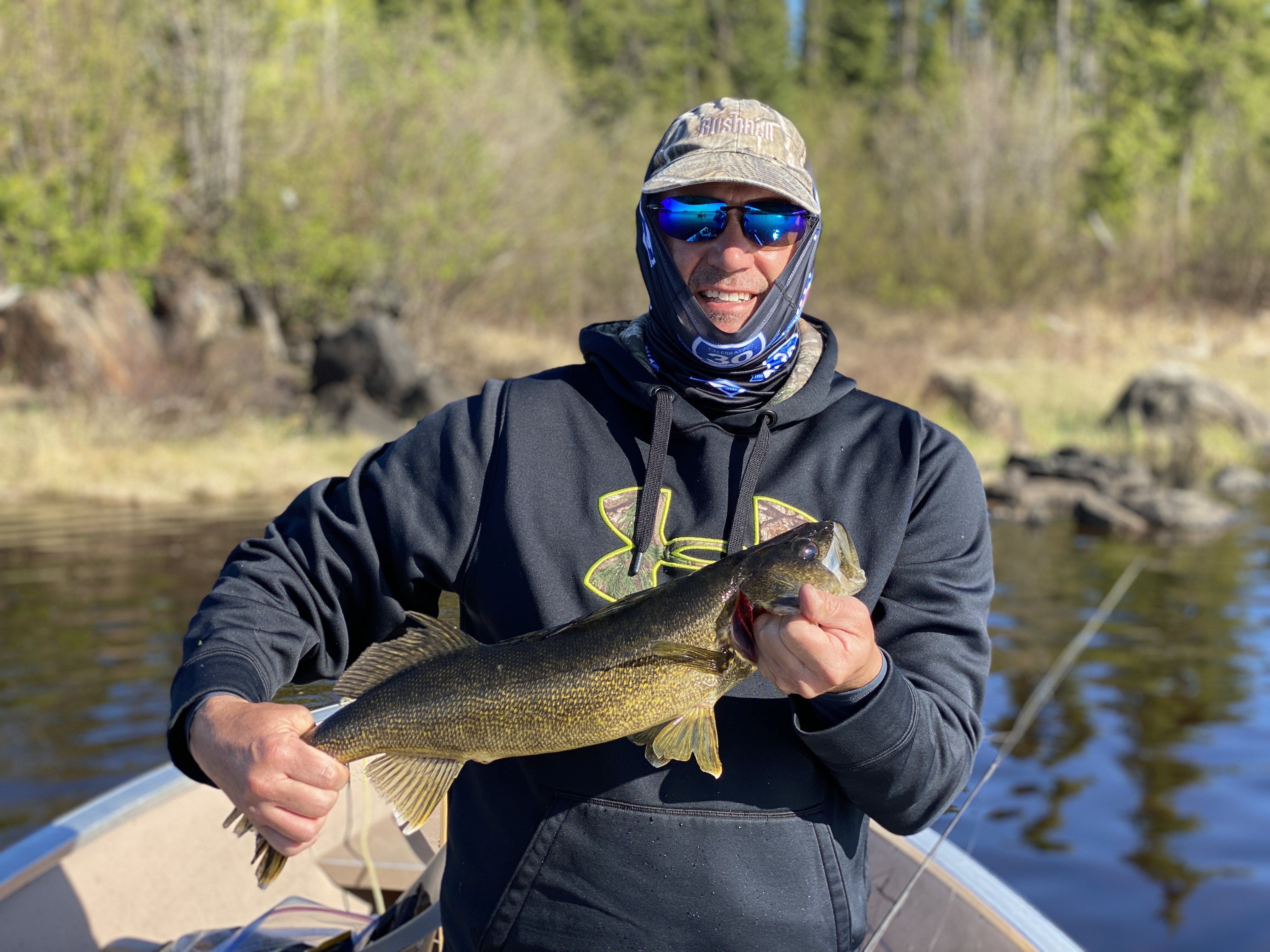
Like most bodies of water though, they were not “everywhere”. There were not shortages of locations, but there were definitely spots within spots on this lake. In addition to “the cut”, there was an inflow river that came from adjacent Hebner Lake which produced huge numbers of fish, and my brothers largest (28inch). We were catching Walleye in the current in about 2 feet of water. Huge Walleye that you could almost sight fish. These two locations were within 15 minutes of the cabin once you new the route and had the confidence you were not going to hit anything. While the waters hazards were pretty well marked, with that much moving water you need to be certain that jugs have not moved, or that the waves are not hiding a shoal you otherwise would have seen.
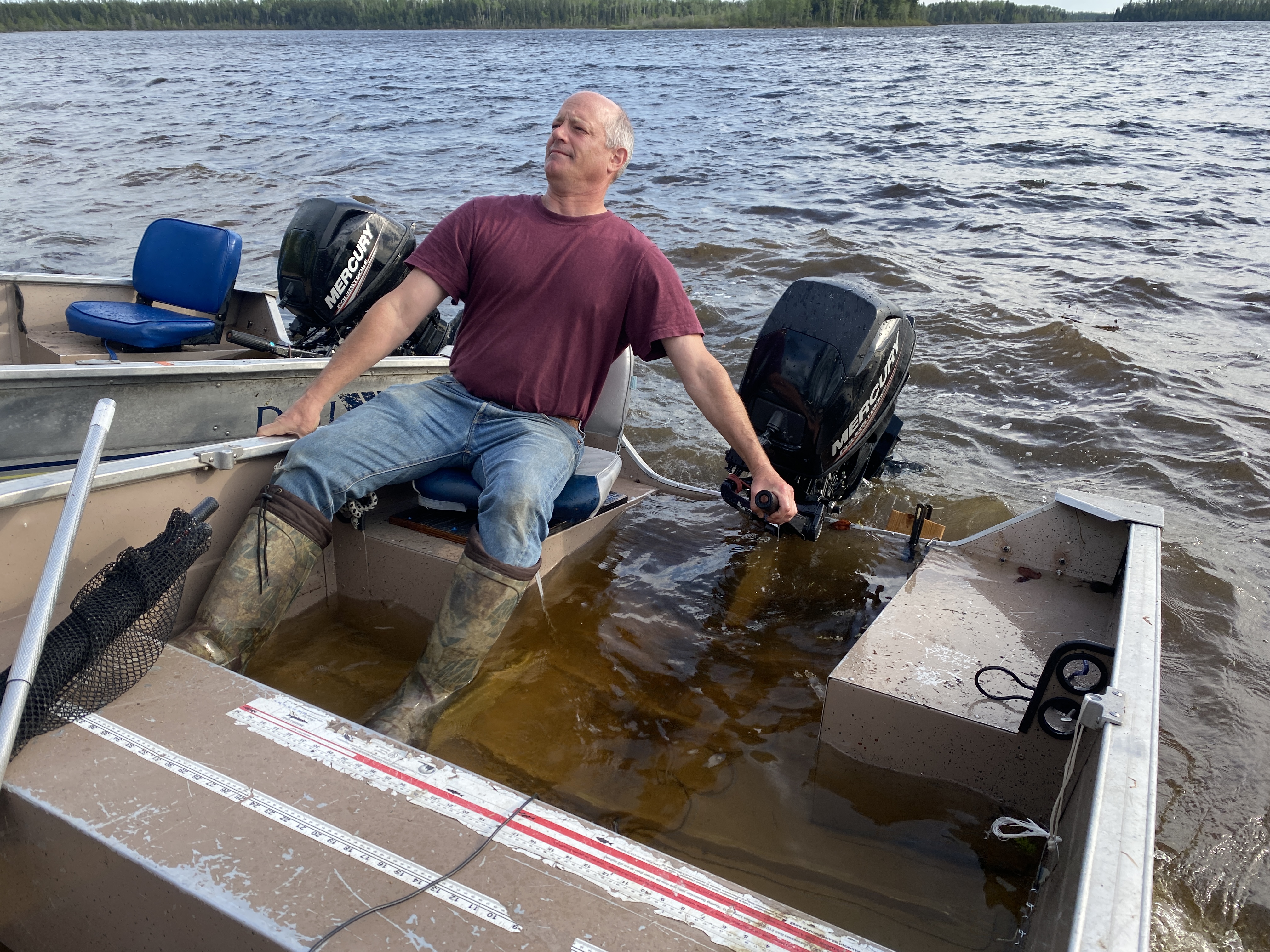
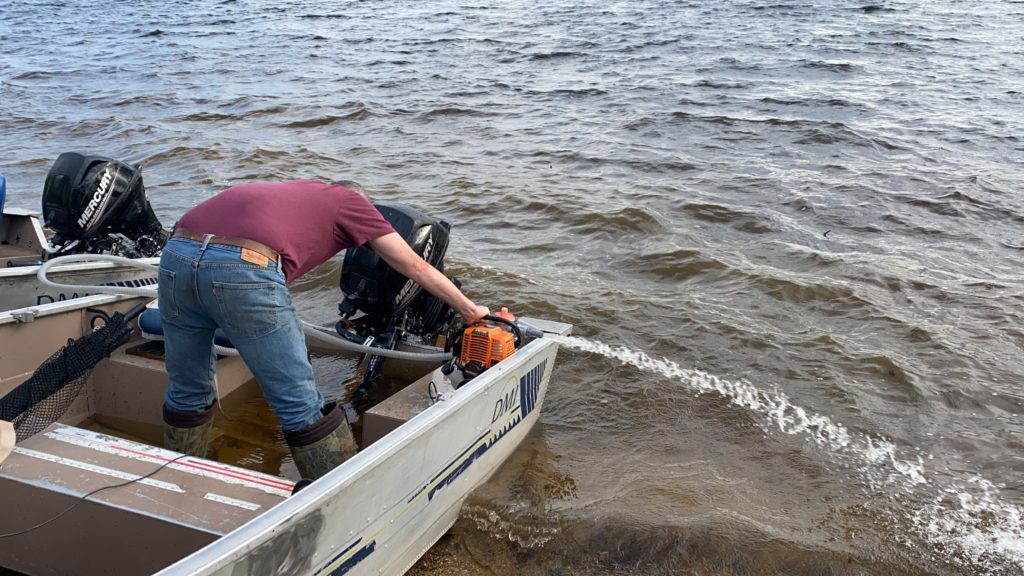
One one afternoon in particular, the wind came up big time. The main lake was not safe, and even the smaller lake was getting to the point where you just didn’t feel great being out in the open. We decided to take the afternoon off, knowing the wind was going to slow down in the evening. Even pulling our boats well up on the beach didn’t prevent the water from filling them up in no time. Luckily our industrious Brian decided there was a faster way to empty them out.
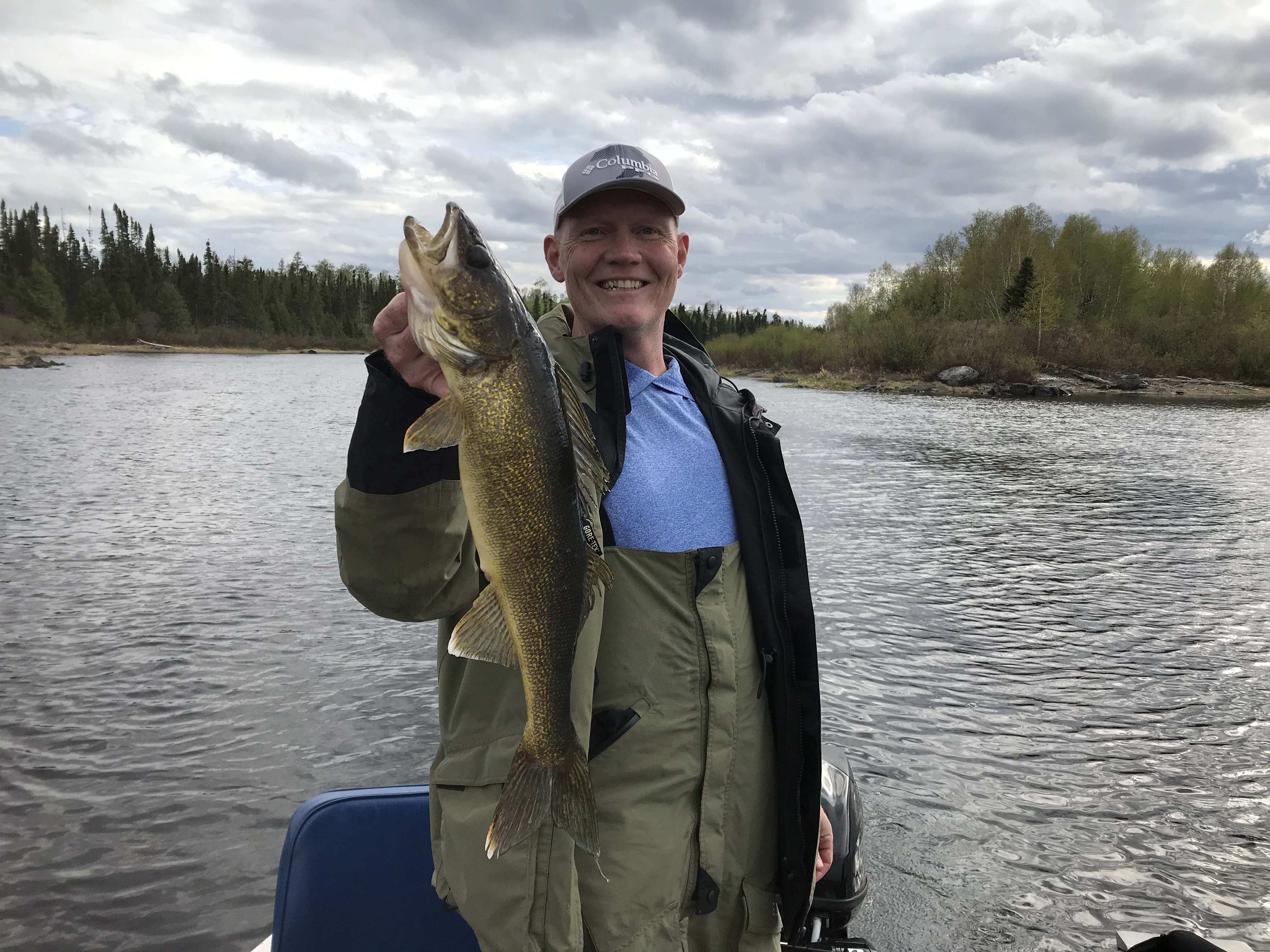
We did venture onto the main lake several times, where the fishing was no less impressive. When you are on a body of water this vast, you really need to plan where you wanted to be. We had done our research ahead of time, and knew that the more southern outflow was both productive, as well as being closer to our cabin. In a stretch of water not much bigger than a basket ball court, we’d pull out fish after fish. One one series I pulled a 26, 27 and 27.5in Walleye on 3 straight casts. Really, just incredible.
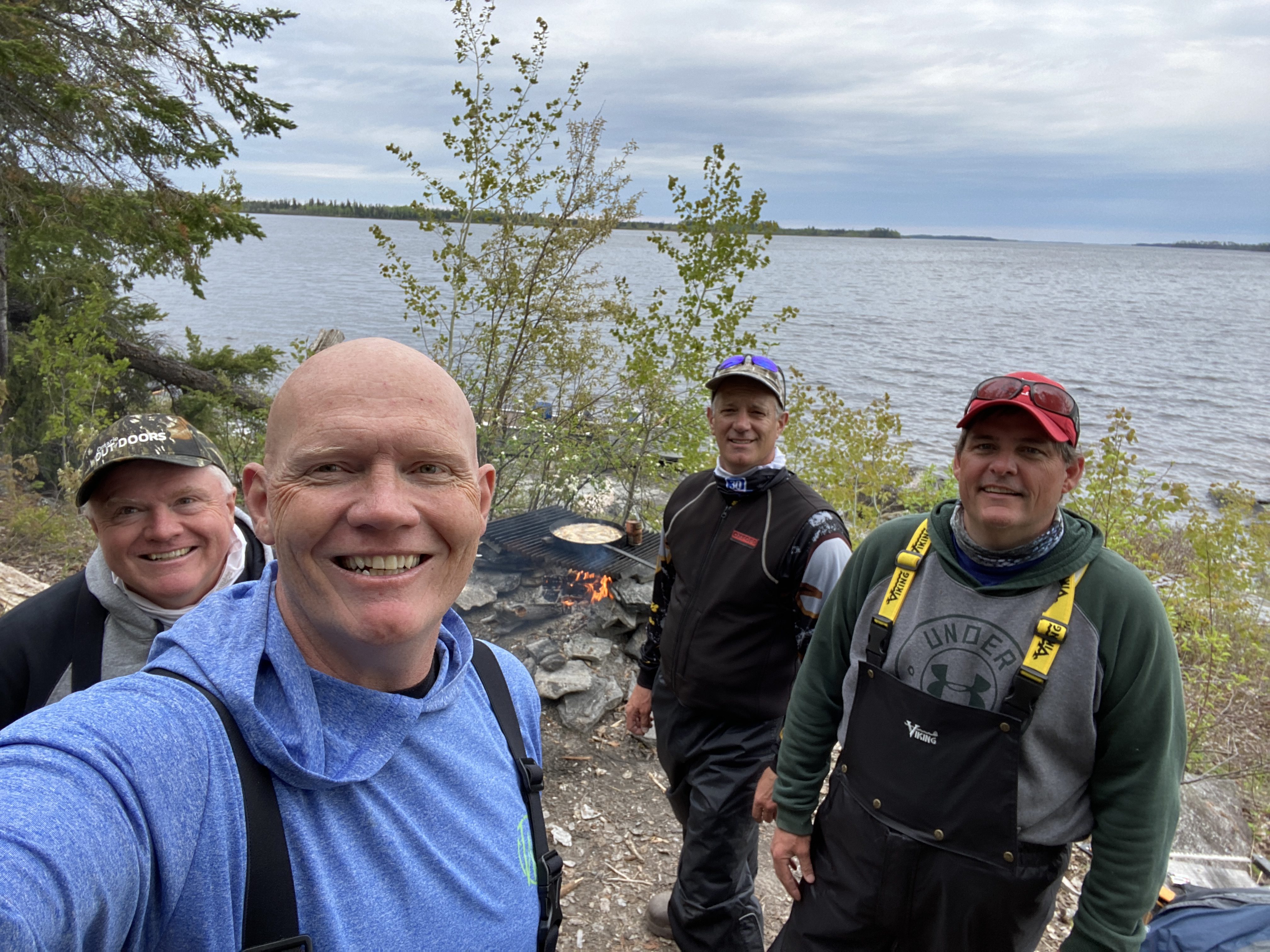
Other great locations included the inflow from the Albany. This was a long haul ride, so we planned it for a day we knew was going to have modest wind. Almost an hour boat ride brought us to the inflow, where we spent a morning fishing pools, eddies, and behind islands. The water was high in the spring, and the current was really moving, so be sure that you have competent drivers on the boats. If something goes wrong, you are a LONG way from any form of assistance. Every location you would expect to find fish on a river, there were fish, and big ones. For many, making a drive that long would be less than desirable, but when you know you are going to fish amazing waters that few have ever been too, you have to make the run. We took a break mid afternoon for a fresh shore lunch, which is also a must have on a remote fishing trip.
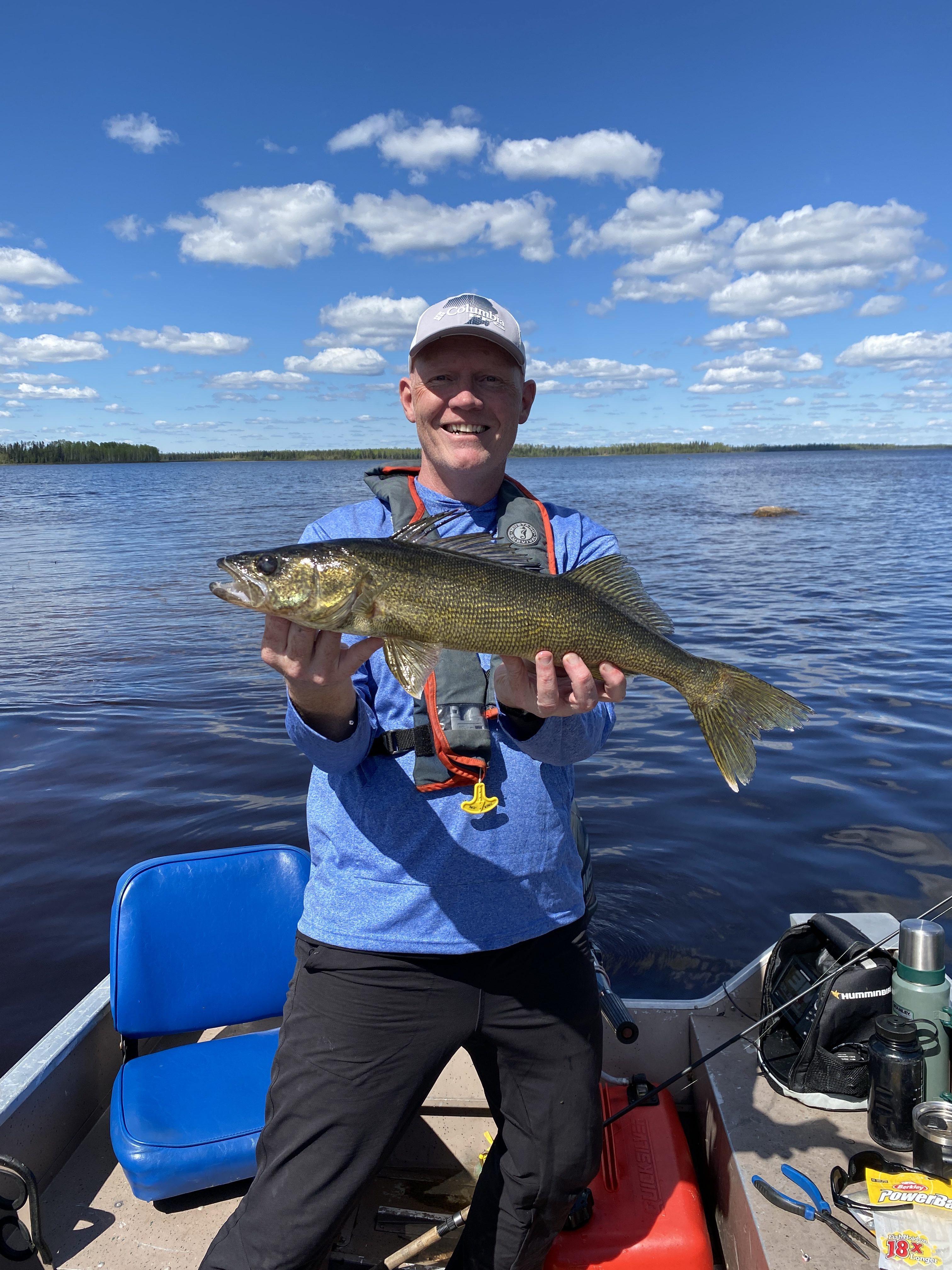
Another location that worked well for us was a massive sandbar off a main lake point. This was a challenge to work, as we would be fishing about 200 metres off shore before we would find the drops. The portable Helix with GPS became invaluable in helping us get to the right spots. Seemingly in the middle of the lake we would go from 10 ft depth to 30ft, and if we could paint the edges, we’d be rewarded with huge Walleye. Again, a location you only want to head to with low winds, but well worth the drive.
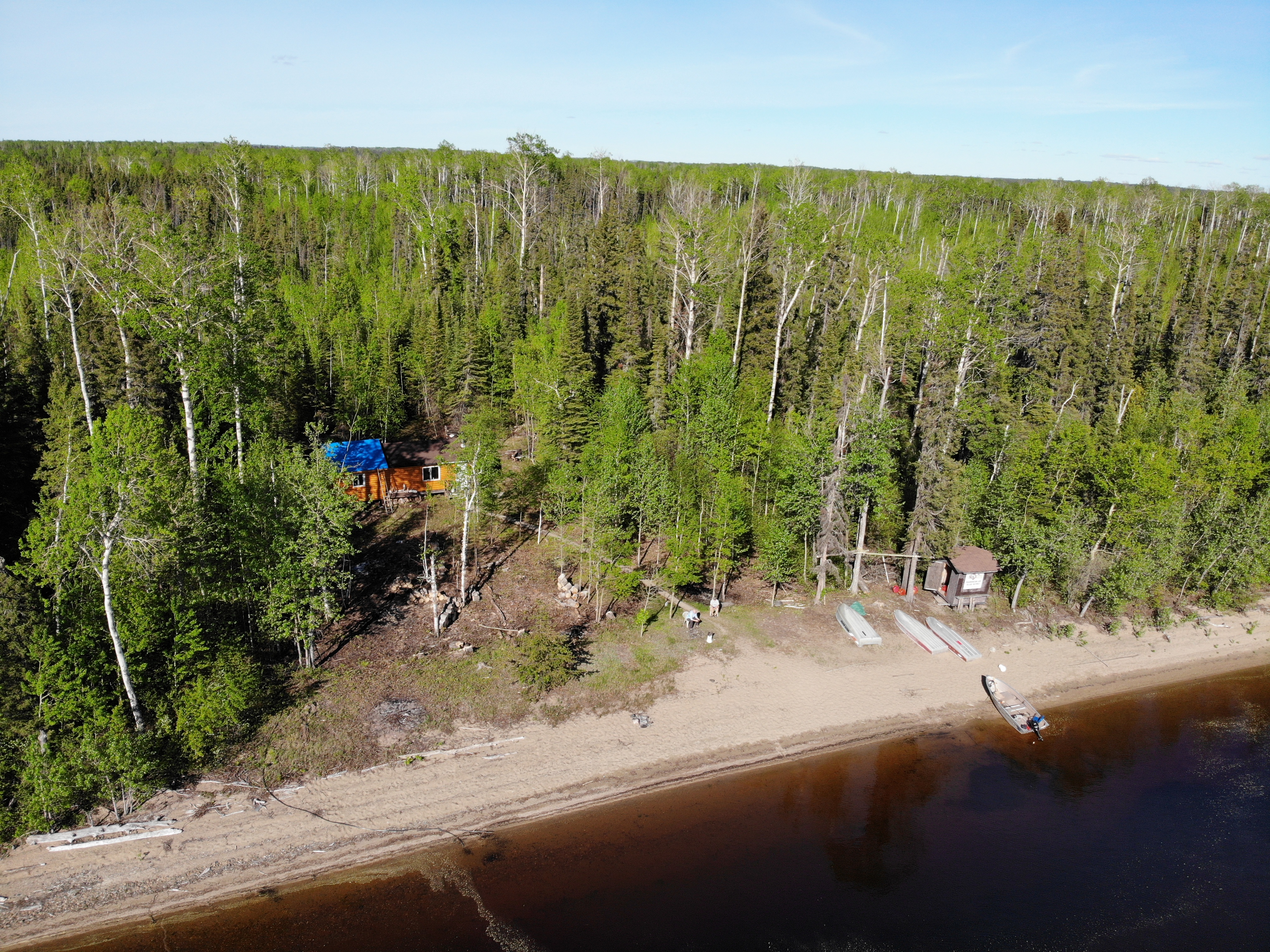
When we weren’t fishing, we were able to take in the amazing scenery. Our cabin was on a wonderful sandy beach, ideal for evening camp fires. Everywhere you looked, you could find evidence of nature at work. Bald eagles, beavers, bush trails on every stretch of shore. Sometimes you get so caught up in the amazing fishing, that you forget to take in the fact that you are in a location in Northern Ontario that few ever get to.
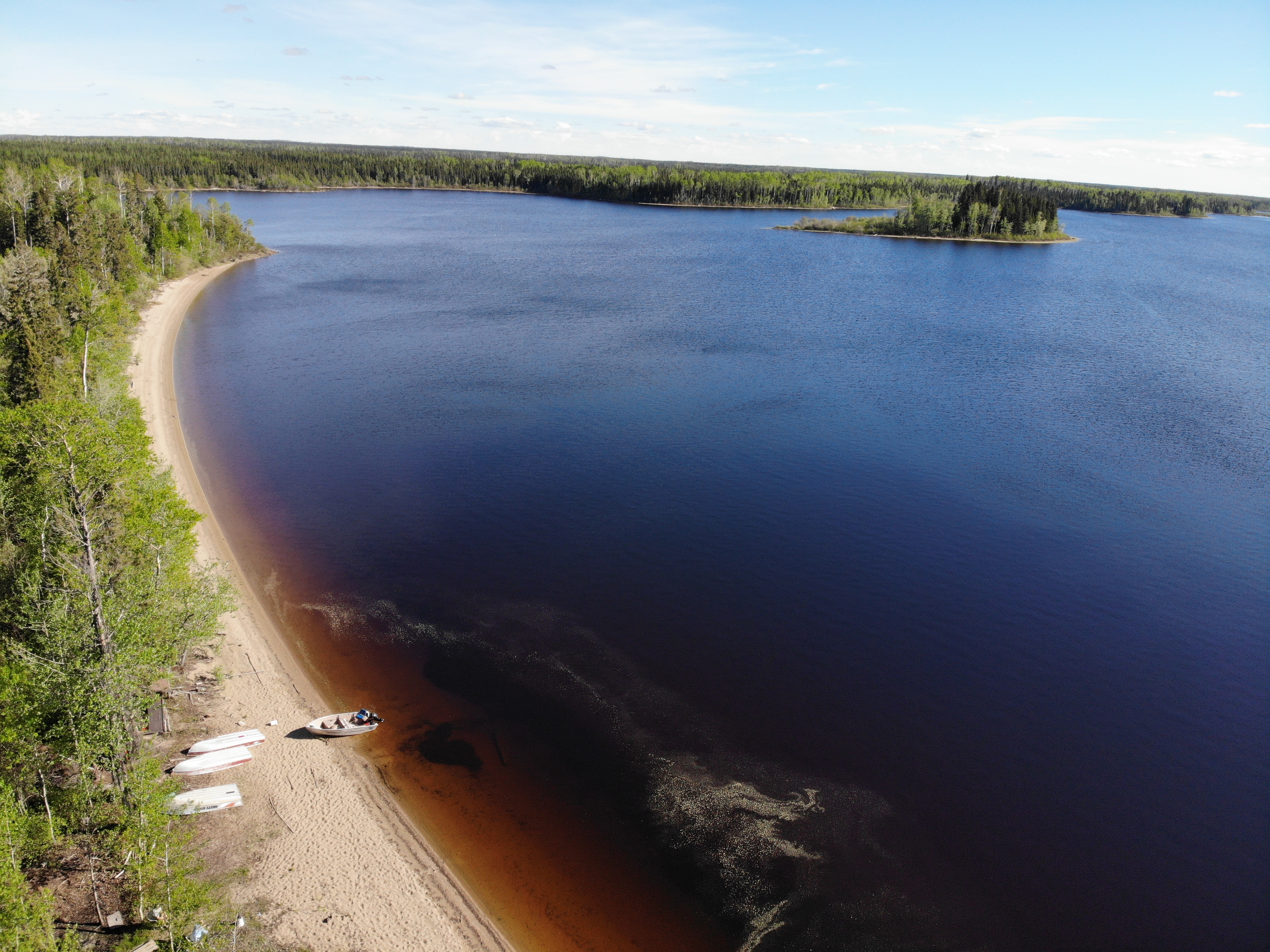
If you like remote destination, amazing quantities of fish, incredible average size, and the knowledge that you are in a location that few angler have, or will ever get to, call Kyle and Brace Lake Outfitters. You won’t regret it.
Epic! Special place for sure